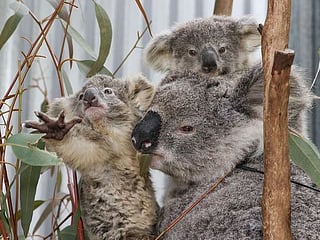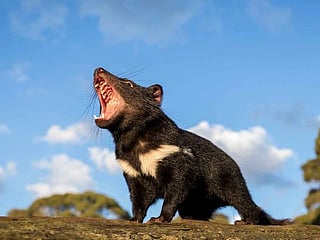2020 in review: Bushfires in a wet year have Australia’s scientists looking to climate change
First bushfires broke out as country was recovering from last season’s record infernos

Sydney: In a summer that was supposed to be unusually cool and wet, Australian builder Rob Lye did not expect to be trapped by a bushfire on sub-tropical Fraser Island and battling with his neighbours to protect their homes.
With climate change overriding some of Australia’s more moderating weather forces, scientists say wildfires like the one that tore through half of the island’s forest in recent weeks are increasingly likely.
“We just found a safe spot to settle and rest while the fire was burning,” said Lye, 52, of the island’s Happy Valley township.
“It wasn’t pleasant,” he said, adding that the local community, many of whom opted against following an evacuation order, saved all 50 or so houses before sheltering for safety as fire tore through the island on Monday.
The first major bushfires of the 2020-21 fire season first broke out in the southern hemisphere spring even as Australia was still recovering from last season’s record infernos, which not long ago would have been considered a once-in-a-generation event.
Research released in March found that human-caused global warming made the 2019-20 fires at least 30% more likely to occur.
“For any specific event, it’s actually very difficult to say ‘the dry condition and the fire is attributable to climate change’,” said Wenju Cai, a climate scientist at the Commonwealth Scientific and Industrial Research Organisation.
“But one thing we are sure of is that climate change will make soil and land dry faster,” Cai said. “It’s the background conditions that can be attributed to climate change.” The fire on Fraser Island burned through 80,000 hectares (198,000 acres) of wilderness on the heritage-listed island off the country’s northeast. The fact that fire could do so much damage in a La Nina year “which normally brings high rainfall and lower temperatures” offers yet another sign that global warming is making Australian weather less predictable.
“What we’re seeing at Fraser Island I haven’t seen in my lifetime,” said Richie Merzian, climate and energy director at think tank The Australia Institute.
“That doesn’t mean that it is a direct manifestation of climate change, but we know that (climate change) is definitely part of the picture, and it is making these things worse.”
Perfect storm
There were signs that 2020 would not be a typical La Nina before the Fraser Island fire sparked in mid-October. The country was experiencing its hottest spring on record, and rainfall over southeast Queensland, home of Fraser Island, was “well below average”, the Bureau of Meteorology said.
Australia has had nine of its 10 hottest years on record since 2005, prompting authorities to warn that fire risk will continue to grow. This year is also on track to feature among the hottest years on record.
There is a “very clear linkage” between climate change and high temperatures, low humidity and dry fuel - the main ingredients of bushfire risk, said Mark Howden, director of Australian National University’s Climate Change Institute and vice chair of the Intergovernmental Panel on Climate Change.
On Fraser Island, property owners like Lye said their efforts were helped by planning a year earlier, when fires destroyed millions of hectares in the country’s southeast.
Residents want to get permission for controlled burns, to diminish forest fuel and reduce wildfire hazards. But securing permission for such burns is difficult on Fraser Island, home to the world’s only tropical forest that grows on sand.
With the island’s wildfire now coming under control, evacuees have been able to return to survey the damage.
“I was in tears because I didn’t realise how close it had come. It literally had burned to the grass on the edge of all the houses,” said Elspeth Murray, head of the Happy Valley Community Association.
“You fight hard on the day, and then it hits you afterwards.”
Sign up for the Daily Briefing
Get the latest news and updates straight to your inbox







